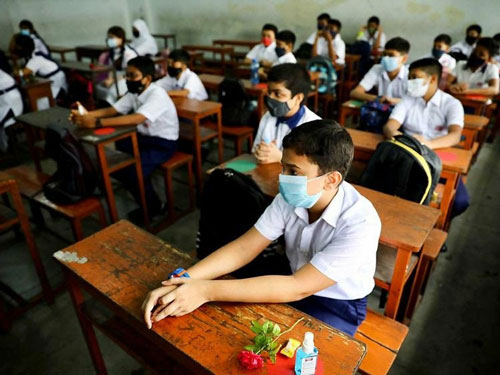Dhaka
Children in Bangladesh flooded back into classrooms on Sunday as schools reopened after 18 months, one of the world’s longest coronavirus shutdowns.
The resumption came after UNICEF warned that prolonged school closures during the Covid-19 crisis were worsening inequities for millions of children across South Asia.
In the capital Dhaka, students at one school were welcomed with flowers and sweets, and told to wear masks and sanitise their hands. Some hugged each other in excitement.
“We are really excited to be back at school,” 15-year-old Muntasir Ahmed told AFP as he entered the campus.
“I am hoping to physically see all of my friends and teachers, not through a laptop window today.” At the gate, school officials checked the body temperatures of students before allowing them to enter.
The school’s vice principal, Dewan Tamziduzzaman, said he “didn’t expect such a big number to be turning up on the first day”.
Only 41 percent of Bangladesh’s 169 million population have smartphones, according to the country’s telecom operators’ association, which means millions of children cannot access online classes.
Even with smartphones, students in many of Bangladesh’s rural districts do not have the high-speed internet access usually required for e-learning.
UNICEF warned in a report released Thursday that the pandemic has accentuated “alarming inequities” for more than 430 million children in the region.
“School closures in South Asia have forced hundreds of millions of children and their teachers to transition to remote learning in a region with low connectivity and device affordability,” UNICEF’s regional director, George Laryea-Adjei, said in a statement.—AFP










